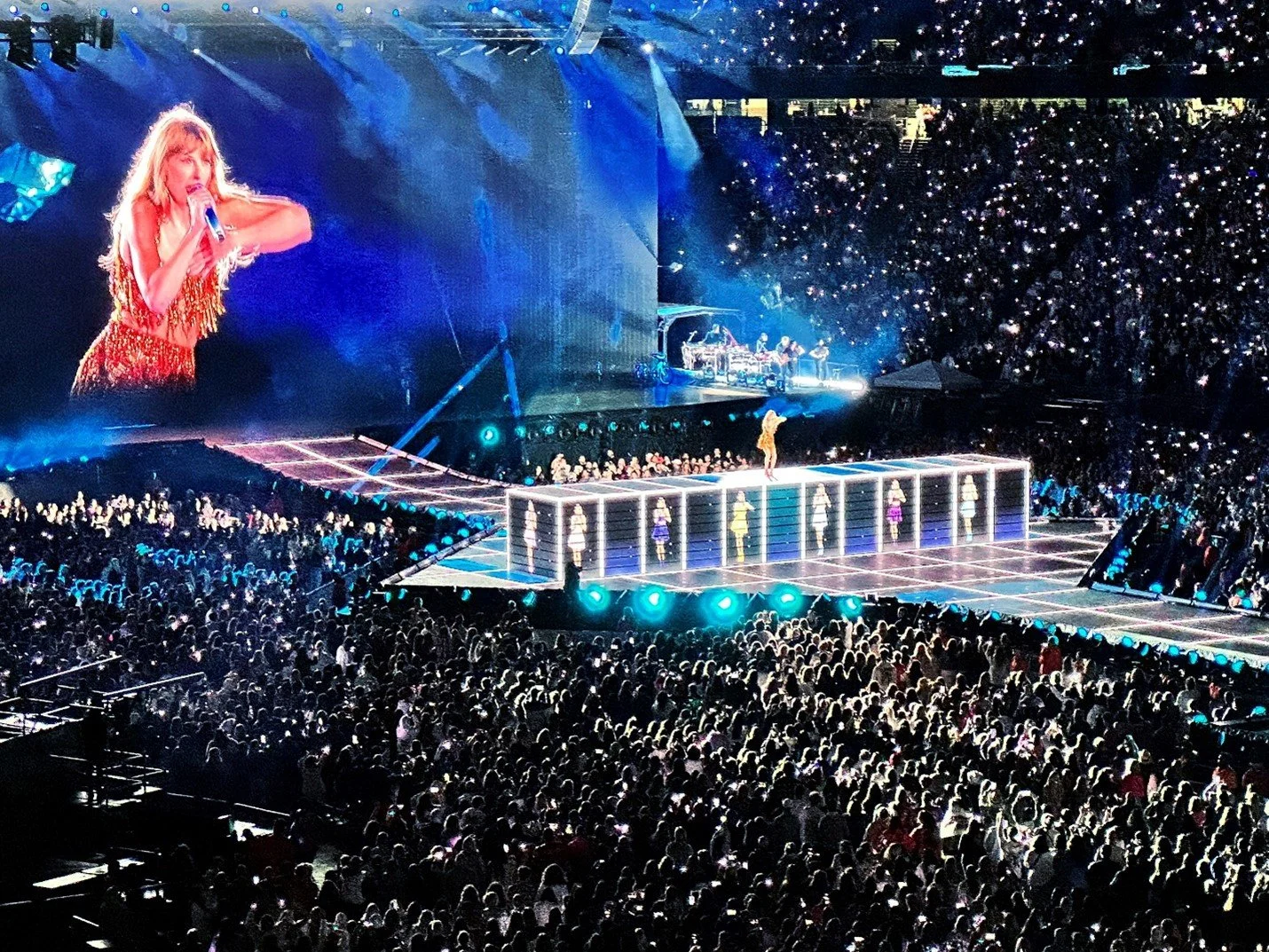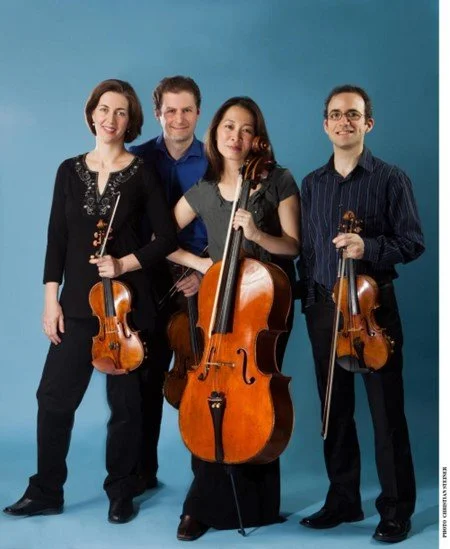Not Every Great Performance, Book, or Film Has to Be a Bestseller
By Thomas Wolf
Taylor Swift at Gillette Stadium on her US Eros tour that had a projected gross of $2.2 billion in North American ticket sales. (Photo credit: Stephen Mease on Unsplash.)
What do you make of the following eye-popping statistic? Taylor Swift’s Eras Tour had a projected gross of $2.2 billion in North American ticket sales.
If you are a classical music aficionado like me who has never listened to Taylor Swift, you can dismiss these staggering numbers by saying they do not relate to our world. But how do you react to the more modest but still impressive fact that the cellist, Yo Yo Ma, the pianist, Lang Lang, and the opera singers, Renée Fleming and Plácido Domingo, reliably sell out large halls with hefty ticket prices at a time when musical organizations report lagging ticket sales?
Cover of Harper & Row’s 1970 edition of the English Translation of Gabriel Garcia Marquez’s One Hundred Years of Solitude that has sold more than 50 million copies worldwide.
As it is with performers, so it is with authors. Agatha Christie’s books have sold in the billions of copies. Of authors active today, Stephen King has sold around 400 million copies of his books. One can be dismissive and claim that these authors do not represent great literature. But what about an undisputed masterpiece like Gabriel Garcia Marquez’s One Hundred Years of Solitude that has sold more than 50 million copies since it was published in 1967? Primarily on the basis of this book, its author, Gabriel Garcia Marquez, received the Nobel Prize for Literature in 1982.
Is this all about obvious recognizable talent? Perhaps. But why then was J. K. Rowling’s first Harry Potter novel rejected by twelve publishers? Subsequently, the series ended up selling more than 600 million copies. Perhaps a more intellectually challenging novel, Lampedusa’s The Leopard, was rejected by publishers during his lifetime and went on to become the best-selling novel in Italy’s history up to that time. It is a sensational novel that I return to again and again.
Similarly, six of the greatest works of modern literature that have sold in the millions of copies were repeatedly and humiliatingly rejected by publishers and their distinguished advisors who were blind to their merits, as recently reported by author Jeffrey Meyers in The Critic: “André Gide considered Marcel Proust’s À la Recherche du temps perdu (1913–27) too snobbish, too slow and too long. T. S. Eliot thought George Orwell’s Animal Farm (1945) was too anti-Russian to be published during the war. Anne Frank’s Diary (1947) was too grim and too sad. William Golding’s Lord of the Flies (1954) was too violent and too cruel. Vladimir Nabokov’s Lolita (1955) was paedophilic and pornographic.”
Headlines focus on that tiny segment of the arts that garners extraordinary numbers (whether readers, audience members, or dollars). The lucky writers and performers are ultimately discovered and rewarded with untold riches and rewards. But what about those creative people—many quite talented, a few geniuses—who struggle to have their work recognized? With respect to book authors, those represented by commercial publishers (a sliver of those who may produce books), many do not earn back their modest advances, if they are lucky enough to receive any. Outstanding performers who are not household names look out on half empty halls and earn fees commensurate with that lack of recognition.
When I embarked on a memoir about my grandmother, I was told that such books do not generate strong sales numbers and therefore are unlikely to find a commercial publisher in today’s book world. Happily, Pegasus Books was willing to produce a beautiful edition.
When I originally embarked on my project to write a memoir focused on the life of my grandmother, Lea Luboshutz (one of the first internationally acclaimed female violinists), I was told that as a book, it was unlikely to find a commercial publisher. “Go to a bookstore, even a large one,” I was advised, “and check out the number of books similar to the one you are writing.” I went to several such stores and found the music section pitifully small with most of the books on the shelves about pop stars or biographies of long-dead celebrated composers. There were no memoirs, not even by famous musicians. Happily, against professional advice, I was able to find a publisher who produced a beautiful volume… but I am the first to admit, I was lucky.
I thought about all this recently when I realized that one of the best books and one of the best films about the lives of musicians are pretty much unknown. Recent films like “Tàr” and “Maestro,” which focus on conductors and orchestras and draw on all sorts of cheap and common stereotypes about classical music and musicians, have become high-profile offerings. Indeed, Todd Fields’ movie, “Tàr,” about a female conductor “with perfectly tailored shirts and a hubristic streak” was rated among the 100 best by the New York Times. Musicians who watched it, including me, cringed.
But two gems about chamber music performers, of all things, went largely unheralded when they appeared and are mostly forgotten today. And so, in the interest of championing what I consider compelling artistic works about serious musicians that reflect many of the realities of the profession, let me offer two suggestions. The first is a film from 2012 called A Late Quartet, which, as of the date of this writing, is still available for streaming. The other is an even older book, Vikram Seth’s An Equal Music, published in the year 1999. In my view, these two have stood the test of time in part because the portrait they draw of the musical aspects of chamber players’ lives resonates with those of us who have spent much time among them.
One of the highlights of the film, A Late Quartet, is the soundtrack featuring the Brentano String Quartet. (Photo credit: Christian Steiner.)
One thing A Late Quartet portrays is every active musician’s greatest nightmare—the onset of a debilitating disease, in this case Parkinson’s, that will, over time, make it impossible to play. And for string quartet players, such a tragedy affects more than the individual with the disease. It affects everyone in the ensemble. Quartet players who have been together for years are so intimate musically, that the loss of one member is devastating to them all. Experiencing how this plays out for the characters in the film is poignant.
An extra bonus in the film is the soundtrack, which features excerpts from Beethoven’s opus 131 quartet—the one musical masterpiece that Franz Schubert asked to be played as he lay dying—performed by the extraordinary Brentano String Quartet.
It is supplemented by performances by Swedish mezzo-soprano, Anne Sofie von Otter, who appears in a flashback as the late wife of the film’s cellist, singing works by Erich Wolfgang Korngold.
Opening page of Beethoven’s String Quintet, Opus 104 that the composer based on his early piano trios, Opus 1, number 3. It becomes a fascinating focus of the plot of Vikram Seth’s novel, An Equal Music.
As for the novel, An Equal Music (which I have written about before), when you go to the internet, descriptions of the book focus on a love story that is, for most readers, the central feature of the plot. But I have to admit that after all the years since I read the book, I had completely forgotten that aspect of the plot. For me, two things lodge in my memory. The first is the accurate portrayal of what it is like to be a professional chamber musician. The other is the description of a remarkable and curious piece of music—Beethoven’s String Quintet, Opus 104 for two violins, two violas and cello. The work is unusual as it is a reimagining and reworking by Beethoven of a much earlier composition: his Piano Trio, Opus 1, Number 3. The novel traces the musicians’ discovery of the quintet and then follows them through arduous rehearsals to the perfection of performance.
So fascinated was I by a major Beethoven work in two versions, each written by the composer himself, that when I was a concert presenter, I programmed both pieces on the same evening’s concert and the audience loved it. The two works are completely different in instrumentation and character, even though they are essentially the same music. Separated by an intermission, the experience for the listener is not boringly repetitive but rather both pieces can be fully and independently enjoyed. Anyone reading the Seth book will want to listen to recordings of these pieces. (There are many available performances on the internet.)
If you are looking for something a little lighter than the works mentioned thus far, but is, in my view, equally entertaining, you might check out the film, Quartet, a British comedy that represented Dustin Hoffman’s directorial debut in 2012. It features a fantastic cast of older actors who play opera singers in a retirement home for professional musicians. If you don’t laugh out loud several times during this wonderful film, I will assume you are having a bad day. Happily, many of the supporting and background cast in the film are portrayed by actual professional musicians. They are shown in the closing credits with “then-and-now” photos that should bring a final smile to your face.




